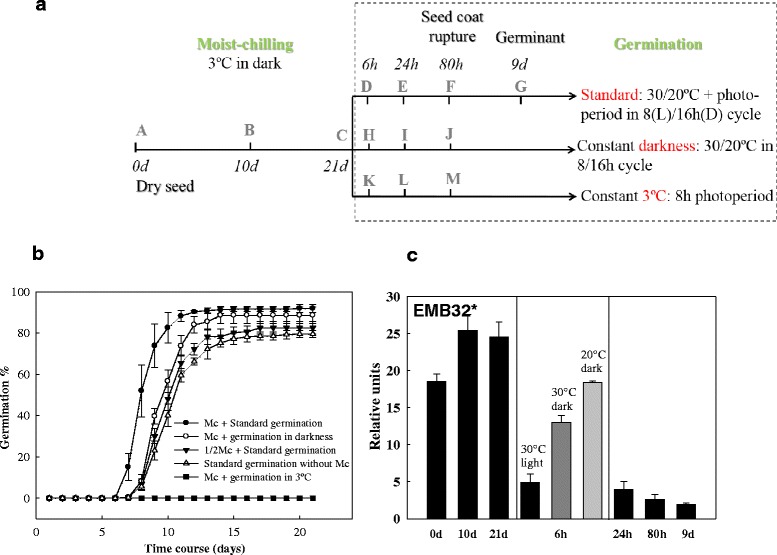Fig. 1.

Effect of moist chilling on the germination performance of white spruce seeds. a Schematic representation of sampling to determine germination of white spruce seeds in different germination conditions with a 21-d or 10-d moist-chilling period (Mc or 1/2Mc) or no moist chilling. In standard germination conditions (30/20 °C and an 8-h photoperiod), seed coat rupture and radicle protrusion was observed at 80 h in the majority of the population. The stage at which the radicle had emerged to four times of the seed length was reached on d 9. b Germination of white spruce seeds under the conditions represented in (a) and without moist chilling. Data points are means ± SE of four dishes of 100 seeds each. While biologists define the completion of germination as radicle emergence, ‘germination’ percentage in the forest industry is based on the number of seeds that reach the stage when the radicle has emerged to four times the seed length (approximately 4 mm for white spruce). In b, we used this latter definition. c Transcript dynamics of the dormancy marker, EMB32 during moist-chilling (0, 10, 21 d), germination (6, 24, 80 h) and seedling growth (9 d) (black bars). At the 6 h time-point, transcript levels were determined under three conditions: in seeds after their transfer to standard germination conditions (30/20 °C and 8-h photoperiod) (black bar), in seeds maintained in darkness at 30 °C (dark grey bars), and in seeds maintained in darkness at 20 °C (light grey bars). Relative expression levels as determined by RT-qPCR are shown. Each data point is the average of three biological replicates. Bars indicate the SEM. Note: one asterisk (*) indicates that the gene has been annotated in gymnosperms but not in white spruce
